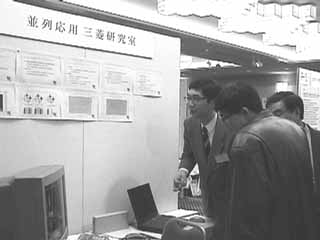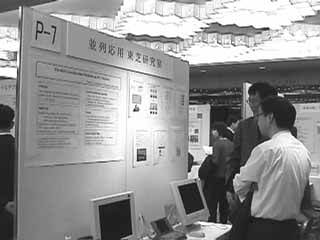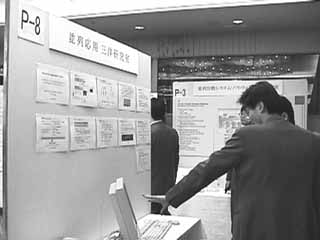Parallel Analysis and Prediction of Sequence Data
Parallel Application Mitsubishi Laboratory
http://www.rwcp.or.jp/activiteis/achievements/PA/mitsubishi/

|
We are studying how the sequential data including time series data
be classified and predicted efficiently on the parallel processing
environment. We show state-transition models of the time series of
the aerological wind velocity distribution data of Japan which is
available from JMBSC (*1), and the dihedral angle series of the protein
main chain from PDB (*2). They are based on the mixture of diagonal
covariance Gaussian model, and built by expectation maximization algorithm.
These models represent the probability distribution of the aerological
wind verocity and the probability distribution of the dihedral angles,
respectively.
(*1) Japan Meteorological Business Support Center
(*2) Protein Data Bank
|
Parallel Classification Methods on PC Clusters
Parallel Application Toshiba Laboratory
http://www.rwcp.or.jp/lab/mpap-toshiba/

|
We aim to develop a parallel and distributed algorithm on a personal
computer cluster for processing data of more than 100 gigabytes using
a classification method which is a data mining method for discovering
useful knowledge and rules from the data stored in the database.
This demonstration shows the parallel effect of classification methods
executed on a cluster of 16 personal computers. The two methods are
the slice and dice analysis method, which was developed by us and
a widely used classification method of the decision tree construction
technique.
|
Parallelization of Content Based Image Retrieval Using Qualitative
Description of Objects
Parallel Application Sanyo Laboratory
http://www.rwcp.or.jp/activities/achievements/PA/sanyo/index-99-11.html

|
We presents the results of our research on techniques for
content-based image retrieval. This technique allows the user to retrieve
a desired image from an image database without text information such
as a title. Since the retrieval is conducted based on the content
of images, the technique is called content-based image retrieval.
Conventional content retrieval techniques are based on features
such as the color or size of an object appearing on a screen. However,
we have achieved more accurate image retrieval by applying a unique
object recognition technique to the image content retrieval. This
object recognition technique is not easily affected by the appearance
of the object (angle of tilt, size, etc.) and is robust even when
part of the object is occluded. As an interim research result, we
will demonstrate our content-based image retrieval technique using
the example of retrievals of a logo mark.
|


